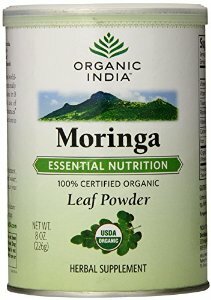When the summer sun comes out to play, the exercise regimen’s come out to work and in my own attempt to stay healthy, I began to rummage through numerous online health outlets for diet and exercise advice.
After a summer of following online guides, the lack of calories constantly made me dizzy and exercising left me wilted. I decided to go to a nutritionist for guidance on my nutrition and exercise regimen. Through our conversation, I learned my caloric intake for my body type, activity level, height, age, and desired weight goal was significantly lower than recommended by my registered dietitian.
Upon sharing my story to Stephanie H., a dietitian intern and Benedictine University Nutrition and Wellness Masters student, she provided me insight into nutritional misconceptions, caloric intake formulas, and online health resources.
Her first tip is to know the difference between a nutritionist and a dietitian: “I would recommend seeing a registered dietitian for nutritional advice due to their extensive training. Nutritionists are not licensed to practice and have not participated in a dietetic internship, masters program or the registered dietitian exam.”
SLM: Due to convenience or money constraints, people use online resources on calorie intake and weight loss information. What misleading information have you found?
Stephanie: ”A common flaw I see on a lot of websites are over and underestimating calories. Dietitians use specific formulas in order to correctly estimate each individual’s specific needs. Some of the key factors dietitians look at are: BMI (body mass index), age, and activity level. For the “average” person (BMI between 18.5-24.9), a typical formula would be 25-30 calories/kilogram of body weight. This is an estimation and may be subject to change for various reasons including increase or decrease in activity level.”
SLM: What goes on in a visit to a nutritionist?
Stephanie: “All dietitians practice differently. When I see clients, I recommend them bringing in a three day food log and some topics of interest before the initial meeting. This way I have an idea of their goals and how I can help them achieve their healthy, reasonable goals. For instance, if the client wished to talk about healthy eating and food labels, I would provide them with lots of information on healthy snacking ideas, how to read a food label, and common misconceptions or mistakes regarding label reading and portion sizes.”
SLM: Which health sources (magazines, television, etc) have you found to be the most reliable on nutrition and weight loss?
Stephanie: “Eatright.org is a great source for tips on eating healthy on a budget, dietary guidelines, meal planning, and more. You can find great recipes from skinnytaste.com. It provides serving sizes, portions, and breaks down calories and fat for each recipe. This site also takes every day comfort foods and recreates them with healthier ingredients.
I also often recommend a phone app called Fooducate. By scanning food items using their bar code on the packaging, this app will give the item a grade (A, B, C, etc). This tells you why this food is good or not so good for your body. The great appeal of this application is it also provides healthier alternatives to the food item you have scanned.”

In your nutritional search, relying on yourself may seem like the efficient option, but a registered dietitian can help you achieve your goals safely: “I believe a benefit of seeing a dietitian is they are experienced health professionals that can help you achieve personalized goals as well as quit poor habits. Dietitians can also help with chronic diseases such as diabetes, irritable bowel syndrome, heart disease, and kidney disease through promoting a healthful diet for each specific disease state.”
To find your personal dietitian, search Eatright.org’s, “Find an RD”, a national database of Registered Dietitians, by location or expertise.
By



